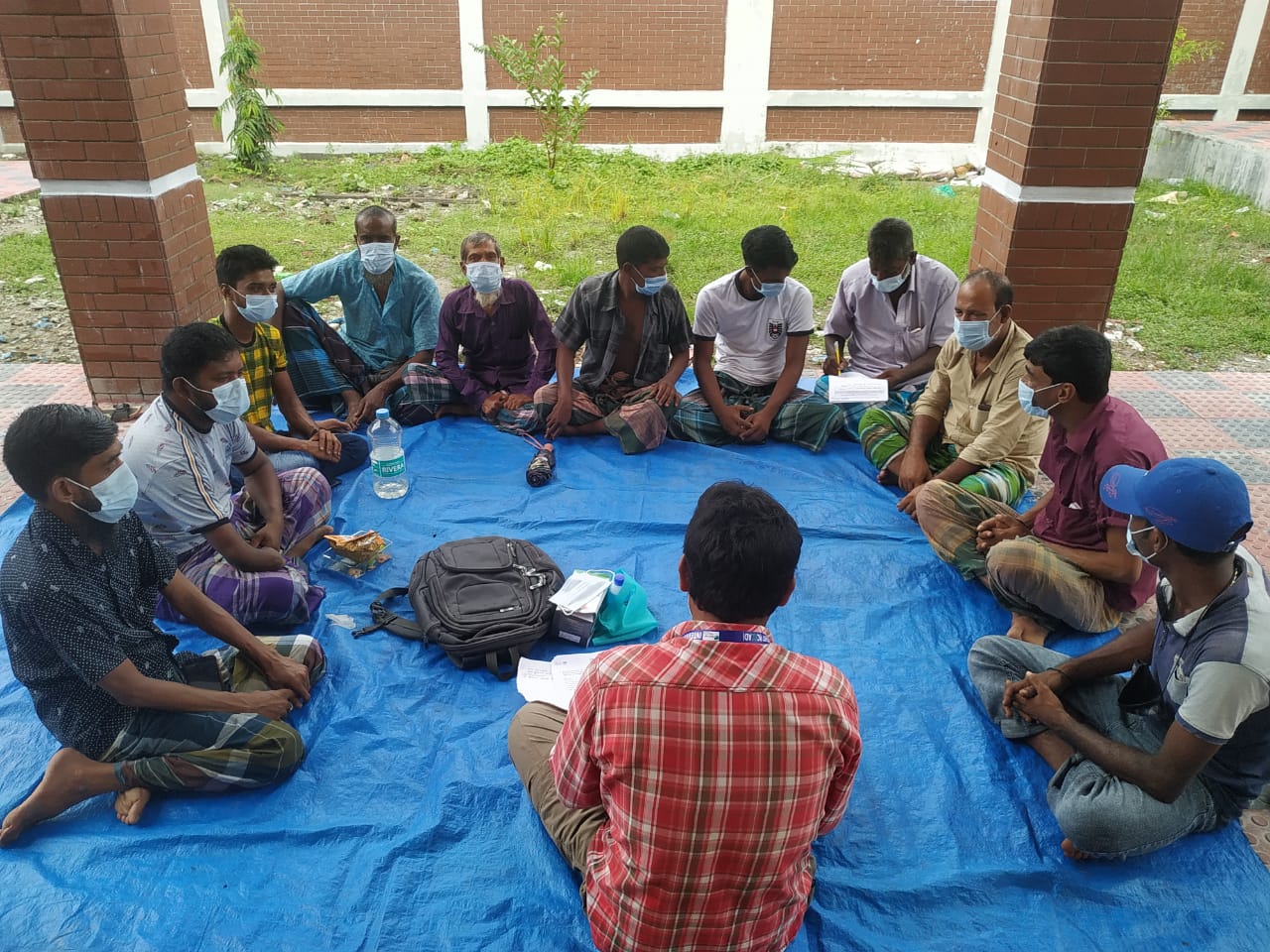Mongla, the second seaport of Bangladesh, is situated in the southernmost part of the country. As the local economy has grown, the area has witnessed a massive population influx, with around 150,000 residents now living there. This has put a significant strain on water resources. The groundwater is saline, and the community relies entirely on surface drinking water sources. During the rainy season (from early June to mid-October), the river has fresh water and ponds are replenished. In the dry season, however, there is a problem with salinity in river water and surface water supplies reduce drastically. People store (harvest) rainwater for consumption in the dry season.
In interviews with key stakeholders and residents, we discovered the ways that people access water in Mongla as well as the challenges they face. The residents have access to water through different processes. In 2011, the central government, through the Department of Public Health Engineering, completed the excavation of a 40-acre rain-water harvesting (RWH) pond and installed a water treatment plant. After two years, another 60-acre RWH pond was added with a second treatment plant at the same site. Ownership of these was subsequently transferred to the local municipality.
The construction of these ponds transformed the area’s water supply which previously had been via water containers transported from Khulna by barge. The municipal authority has constructed a piped network of 2600 connections. Each day the municipal authority RWH system can provide 1.9 million liters of water to residents. Households pay the cost of connection and then pay a monthly bill. The price depends on the diameter of the pipe. For a 0.75-0.50-inch diameter pipe, the municipal authority charges BDT 2000-2500 (US$20-25) for installing water connections and BDT 200-300 (US$2-3) each month.
Alongside municipal water, there are non-governmental organisations (NGOs) and private individuals providing water. Since the mid-1990s, the US NGO World Vision has managed a RWH pond of around 0.04 acres, providing water without charge. In addition, some private companies and NGOs started to sell water around 2015. Five small-scale water treatment plants using rainwater and small amounts of ground water are operating alongside the municipal authority RWH system. Four of these plants operate on a profitable basis and one is not-for-profit. The capacity of these private water providers ranges from 7000-12,000 litres per day, but demand varies widely depending on the time of year. Private providers charge BDT 20 (US$0.2) per 30 liters water jar and will deliver for an extra BDT 5 (US$0.05) per water jar. One of the private companies gives a subsidy to low-income households but this is informal.
To access the water network, residents need to provide details of land property ownership and a ‘holding number’ that identifies the house. Without these, they are required to give a deposit of BDT 8000 (US$80). This process excludes low-income residents living in informal settlements. The deposit is more than a month’s salary for these informal residents. With no legal tenure, households are under constant threat of eviction, which is a deterrent to investing such a large sum in a water connection. Even though households want to pay monthly bills and installation costs, these additional costs mean a connection is unaffordable.
Around 20 municipal water connections are common water points in informal settlements, home to lower-income households, where water is provided without charge for two periods of approximately 2 to 3 hours, once in the morning and once in the afternoon. Nevertheless, some households live far from these water points and must carry water long distances or pay for transportation. During the dry season, the amount of time that water is available from municipality collection points is reduced. Long queues form at water points, and residents often have to return home with no water. Sometimes water conflicts occur. There are also instances where people resort to unsafe water sources and develop water-borne illnesses and skin disease.
With growing economic investment, the population of Mongla is expected to expand. The local community has shifted significantly to rainwater harvesting at the community level as well as individual investments in tanks and jars. This is an example of a traditional or locally-led adaptive approach to harvesting rainwater. However, low-income households are excluded from this process due to lower access (as explained above) and the high costs of individual storage tanks. Residents face a freshwater crisis and informal settlers are the most vulnerable. They also suffer further deprivations such as a lack of housing, sanitation, and drainage facilities.
Policy needs to focus on improving water supplies for the poorest households in Mongla, especially in the dry season. Possible interventions include: provision of individual water storage facilities such as polyvinyl chloride tanks; expansion of municipal RWH capacity through deepening the existing ponds and adding new ones; and extension of the municipal piped network to reach informal households. All of this requires additional financial investment.
Md. Lutfor Rahman (Researcher at the International Centre for Climate Change and Development) and Kate Bayliss (Senior Research Fellow at the University of Sussex) are members of the Inclusive Urban Infrastructure (IUI) team. IUI is a project funded by UK Research and Innovation through the Global Challenges Research Fund under the title ‘Towards Trajectories of Inclusion: Making Infrastructure Work for the Most Marginalized’ (grant reference number ES/T008067/1).
